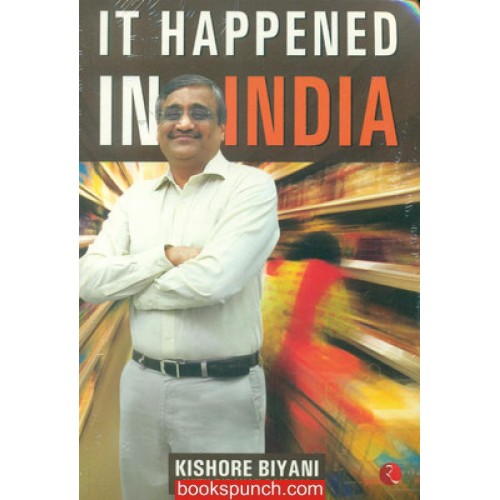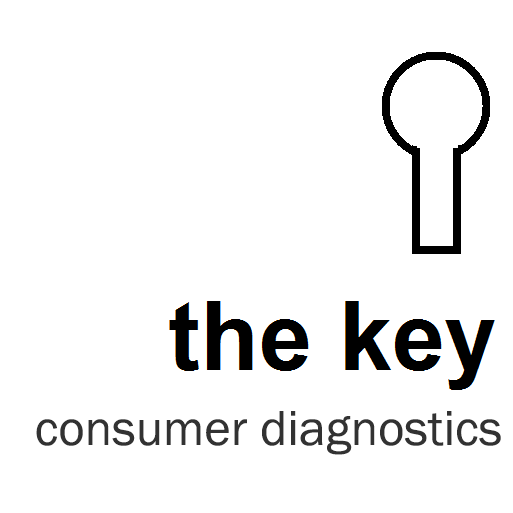If ‘sample size’ is the concern a marketer attaches to a qualitative research, then either s/he is not clear what s/he wants from the research or s/he may be a first time user of qualitative research. The latter’s exposure to research may be limited to a close ended questionnaire filled up by ‘at least 50-100’ different people.
Qualitative research is not a survey, a dipstick or a questionnaire filling exercise that can tell you HOW MANY people said they thought badly or nicely about a brand or person.
Qualitative research is exploratory, understanding the said and the unsaid, lot of observation and decoding that can tell you WHY those people thought badly or nicely about the brand or person.
Q: How many people would you want to research to understand that in India, we look to our right before we cross a road?
A: We don’t need to research any. The important thing is to observe this pattern when a retail research is happening and bring it in your sightline to juxtapose a few observations and dovetail them with the truth we already know – that India is a RHS drive country.
The insight that Indian shoppers go naturally straight or to their right when they enter a shop, can be decoded from just an observation and an already known truth.


We walk straight or right when we enter a store – because we are a right hand drive country
Qualitative research is not about numbers, but nuances. It is not about sample size but about the depth of responses. It is not about lot of information but sharper insights. Many marketers are guilty of using qualitative research as a short cut to quantitative research. So they look to mine insights ‘at least’ from X no of sample size. There can be nothing more short sighted than that. And a bigger disservice to the brand they are researching.
Insights can be derived from fewer interactions or observations. One can validate them through numbers with a quantitative exercise subsequently. Sometimes even that is not required. But being bull headed about meeting x no of people for a qualitative research is like checking all the grains in the pot to understand if the rice is fully cooked. Something you can achieve by just pressing a few grains! With a lot less resources, time and effort.
Most marketing managers are ‘guilty’ of cutting to the chase. Linear line of questioning like “just ask the consumer why s/he dis/likes my product and I shall know what to do next” has landed them into defending their product more and more - to the point of valueing less and less of what any customer gives as feedback. As an upshot consumer research itself has becomes the favorite flogging horse for marketers.
So much so, that some successful marketers come across as research skeptics. Sample what the man touted as Sam Walton of India, Mr Kishore Biyani has to say about research – “We have a very low cost of innovation. We don’t do research. We do not hire consultants. We experiment and do everything on our own. We run the largest design company and are very fast in our approach.”
(Click to read the interview)
In the same interview, he says “We come to know within one month of launching a new format (sic) It is like a movie. First day, first show, the consumers tell you whether they like you or hate you. It is for you to notice and pick up what they are saying.”
What Biyani is saying in effect is that he believes in what the consumers say but he may not believe in outsourcing consumer research to companies. His last statement is a sure give-away of what he finds lacking in the industry today. And indeed the experiments he did which he destroyed later did not take off because of the changing consumer context. Something a one-on-one chat with consumer is not likely to reveal. Something that most marketers forget to factor in.
Over time, marketers have developed theories about why consumers buy. Most of these err by viewing the consumer through the lens of the product. Marketers start with the features and benefits of a product and conduct consumer research to find matching needs and motivations. More recently, Internet and digital media companies added a new layer of suppositions to explain and predict consumer behavior. Their approach views the consumer through the lens of digital technology. However, they misinterpret data about the activity of online users as being a valid insight into the consumer decision-making process.
Consumers do not have a Pavlovian response to products and to their marketing programs. Nor do the fundamentals of consumer behavior change to accommodate the latest innovation in digital technology.
Science now tells us that humans make decisions below the threshold of conscious awareness. But what does “unconscious awareness” even mean? And how do we apply it to our business?
The Key’s experience again simplifies the complex nature of human brain. The ‘unconscious awareness’ needs to be drawn out. It cannot result from a simple ask-answer routine. Our researchers are able to elicit both the rational and emotional responses from people by following three simple elicitation principles:
The Key’s 3 Principles of elicitation
Experience over opinion
- evidence beyond testimony and experiencing the experience - If knowledge is empirical, it's based on observation rather than theory. To do an empirical study of sweat shops, you'll need to visit at least some of them. Meditate all day on the origins of sweat shops, but you'll still lack empirical knowledge of how they operate and how they started. You can opine on how badly they reflect on a society or a marketer. But that would be your opinion and not your experience.
The Key firmly believes that any kind of knowledge that comes from experience is better than that coming from opinions. While engaging with customers, our researchers encourage them to narrate their various experiences with a brand or the category. Narration of experiences tells a completely different story from an anthology of opinions. An opinion on a brand may originate from an experience with another brand in the same category. So ahoy researchers and marketers! Suspend your perception of a brand and go deep into living the brand experience of your customer. Live. Evaluate. Repeat.

✗ Ask for an opinion and you get an "expert" one
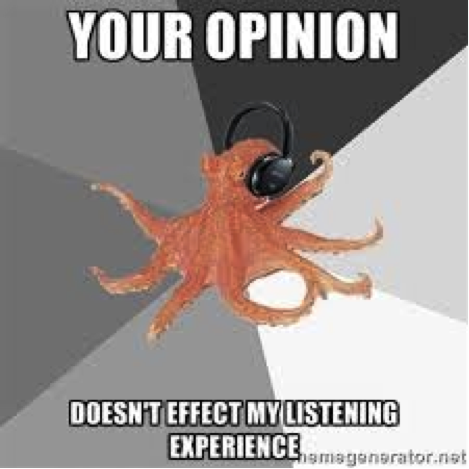
✓ Experience is the best guide
Simulation of real life setting
- Engage in almost real setting to ensure candid responses. If in real life a brand decision is not made on the basis of a discussion with eight strangers then do not engage consumers in a customary focus group discussion. It dwindles into a discussion of who has got the most powerful voice and who tows their line. The key brand decision makers must be kept away from a controlled environment of a one way mirror setting. Put them instead in a real life situation and watch the nuances of brand consumption, imagery, triggers and barriers emerge without too much probing.
The Key has tried to replicate the real life setting which encourages a natural interaction between the consumer and the category. Accompanied Test Drive, Accompanied Pubbing and Shop Alongs are some of the ways of recreating that natural setting – something that The Key has been doing since its inception.
The post modern simulation of the setting which The Key has successfully attempted includes Ankho Dekhi or Social Reporting in a study for toilet soaps. The Key managed to ‘observe’ a girl take a bath with a new brand of soap through the eyes of her friend who would regularly help her in her monthly waxing of arms and legs. The friend became the social reporter who wrote down her observations on key headers as a reporter. This is also how the
redefinition of contex of loofah was discovered.
VAK representation model of NLP (Neuro Linguistic Programming)
– We develop stimulus that enables the calibration of respondents’ Visual, Auditory or Kinesthetic forms of mental representation to connect better with the respondents. These are at times improvised once we discover the mental proclivity of the customer. When a kinesthetic person was unable to find a visual metaphor of herself from the given magazines, we asked her to choose one thing from the house that she felt best represented her daily life. She went from room to room and chose the washing machine! Another woman chose a small potted plant.
There are many keys to unlock the mind of the consumer. We pride ourselves in adopting unusual methodologies always. Or use the proven, existing ones in the most effective manner. We do not have any discussion guides but a series of open ended psychological questions that engage the audience. Each engagement utilizes proven learning methodology that translates into simple exercises like thought bubble completion, spoken word poetry/slam poetry, then & now scenario building, outlines, deprivation exercises, simple graphic images, 3 D models to convey complex ideas besides verbal discussion and observation. The use of sophisticated learning methodology means that the programs are participatory and always result in 0% moderation bias and 100% process bias.
Left and right brain decisions
Adam Smith defined behavior as a conflict between the passions/emotions (Affect) and the Impartial Spectator (Cognition), an internalized other who processes and tells us how we should behave. Unlike what we have earlier believed, it is not human emotions that are unpredictable. Modern psychology shows that affect (emotions) is actually highly regular and that it is cognition (processing) that introduces unpredictability into behavior.
Modern psychologists and neuroscientists know considerably more about affect than about cognitive information processing—in part, because we share our emotional brains with other animals they use for observing experiments. But rats do not have a significant part of brain that we call prefrontal cortex! It is the part of our brain that processes information – reasons, evaluates, judges, computes, communicates. In addition to “thinking,” the prefrontal cortex can override feelings/emotions and contribute to deliberation.
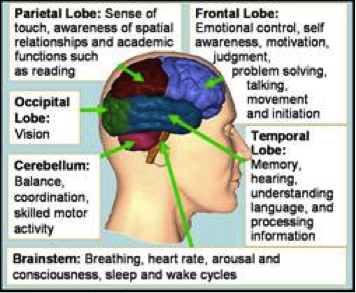
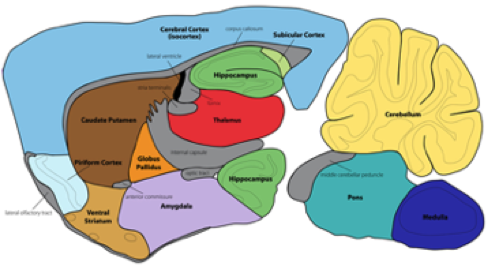
Human and Rat brains are very different
Yet rats are used for experiments to understand human brain
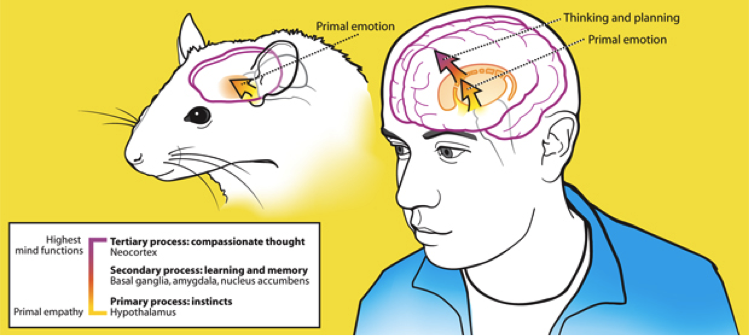
Rat and human emotions are more predictable! Rats do not have the pre-frontal cortex – an area of problem solving and logic – which makes humans more unpredictable in their reasoning!
Unconscious behaviors of rats and humans generally occur in fully predictable patterns unless consciousness or reasoning overrides them in humans. As a result, humans are less predictable than rats! And ironically it is our processing/cognition, our rational pre frontal cortex, our reasoning and logic that makes us unpredictable, not our emotions!
So cognition more than affect influences behavior. It changes us profoundly, and we tend to underestimate its impact.
We unlock with many keys
Theoretically speaking much has been written about the
five approaches to qualitative research. Researchers today are so much under the pressure of deadlines that most of these approaches remain academic or at best implemented only in part.
Most young researchers starting out, get lost in the jargon of narrative versus
phenomenolgical approach and why the latter is better for qualitative inquiry.
Our research experience borrows from these approaches. But at The Key we have not only simplified but also improvised these concepts of 1960s and 1970s to adapt to the post modern needs of a marketer. Simplicity is at the core of what The Key does. And this simplicity is evident in
The Key’s way of doing research. and its
3 Principles of elicitation


